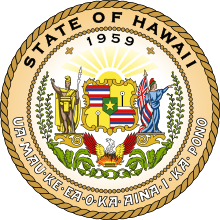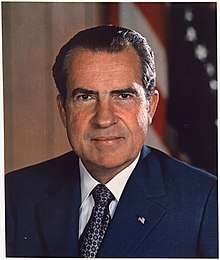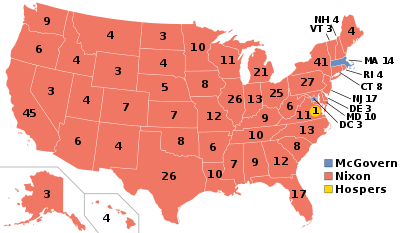1972 United States presidential election in Hawaii
The 1972 United States presidential election in Hawaii took place on November 7, 1972. All 50 states and the District of Columbia, were part of the 1972 United States presidential election. Hawaii voters chose 4 electors to the Electoral College, which selected the president and vice president.
| ||||||||||||||||||||||||||
| ||||||||||||||||||||||||||
 County Results
Nixon 50-60% 60-70%
| ||||||||||||||||||||||||||
| ||||||||||||||||||||||||||
| Elections in Hawaii | ||||||
|---|---|---|---|---|---|---|
 | ||||||
|
||||||
Hawaii was won by incumbent United States President Richard Nixon of California, who was running against former Senator George McGovern of South Dakota. Nixon ran for a second time with former Governor Spiro Agnew of Maryland, and McGovern ran with former U.S. Ambassador to France Sargent Shriver of Maryland.
Nixon won the election in Hawaii with a decisive 25-point landslide, with a clear majority in all four counties.[1] Nixon was the first Republican to win the state of Hawaii and the only one until Ronald Reagan won the state in 1984. It is the last occasion, and the only one apart from a very marginal case in 1960, when Hawaii has voted more Republican than the nation as a whole – since then it has become consistently one of the "bluest" states in the nation.[2]
Results
| 1972 United States presidential election in Hawaii | |||||
|---|---|---|---|---|---|
| Party | Candidate | Votes | Percentage | Electoral votes | |
| Republican | Richard Nixon | 168,865 | 62.48% | 4 | |
| Democratic | George McGovern | 101,409 | 37.52% | 0 | |
| Libertarian | John Hospers | - | - | - | |
| American Independent | John G. Schmitz | - | - | - | |
See also
References
- David Leip's Atlas of U.S. Presidential Elections; Hawaii, 1972
- Counting the Votes; Hawaii


